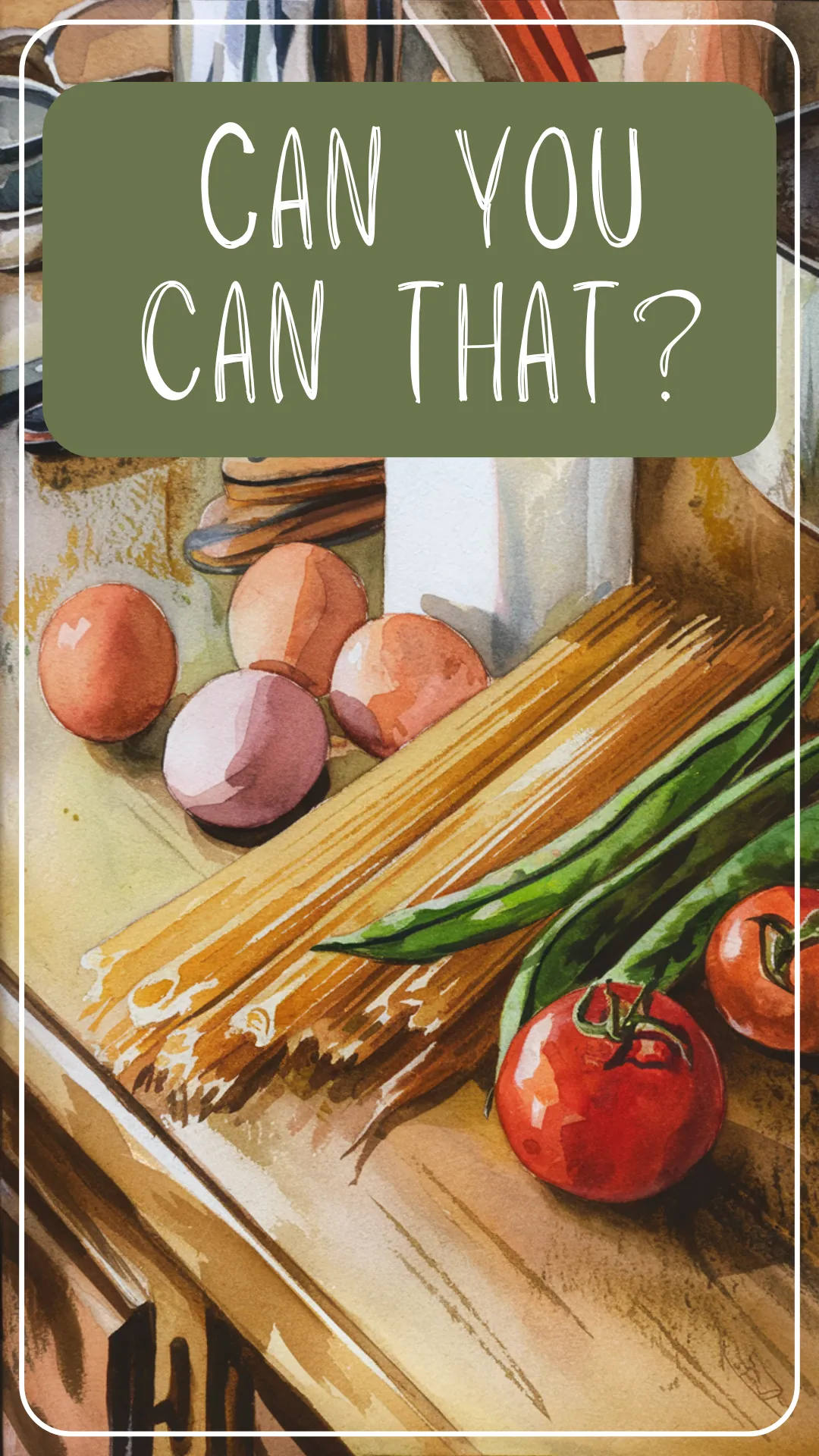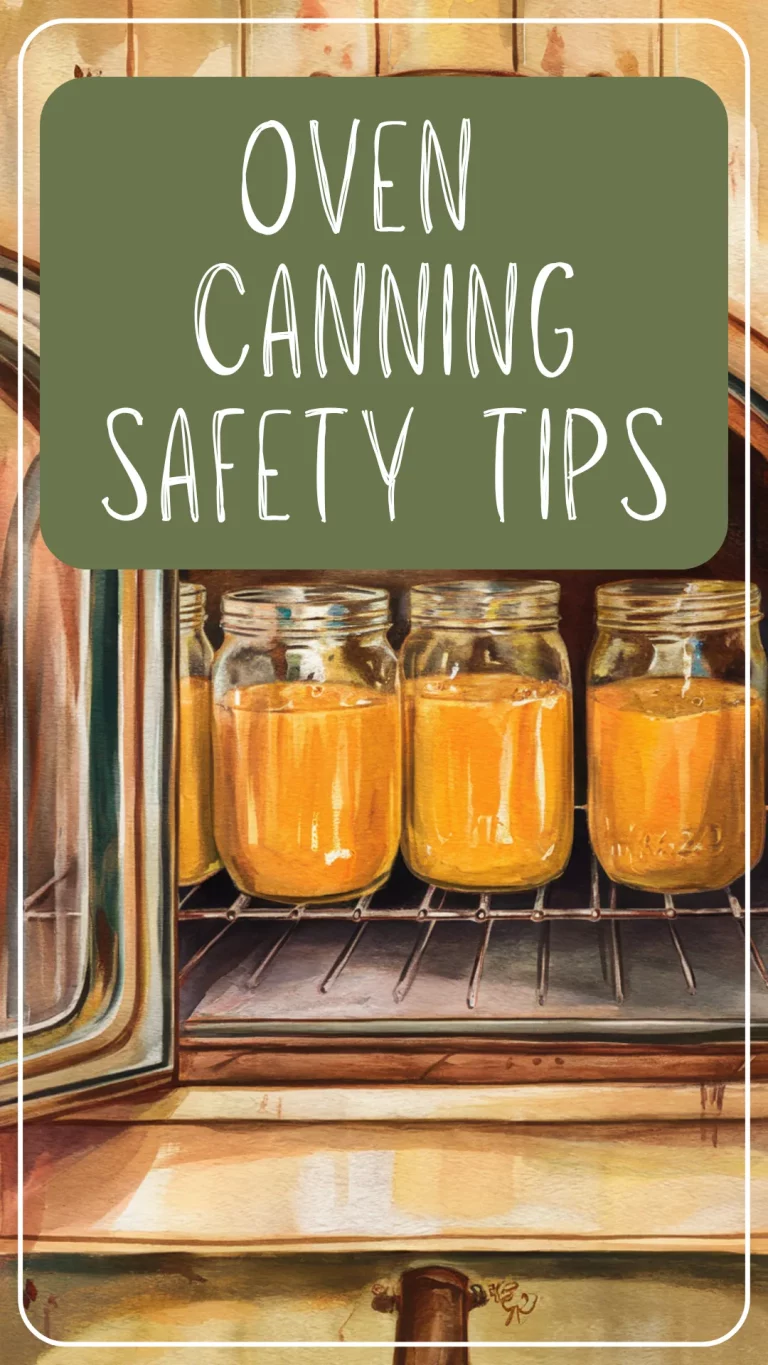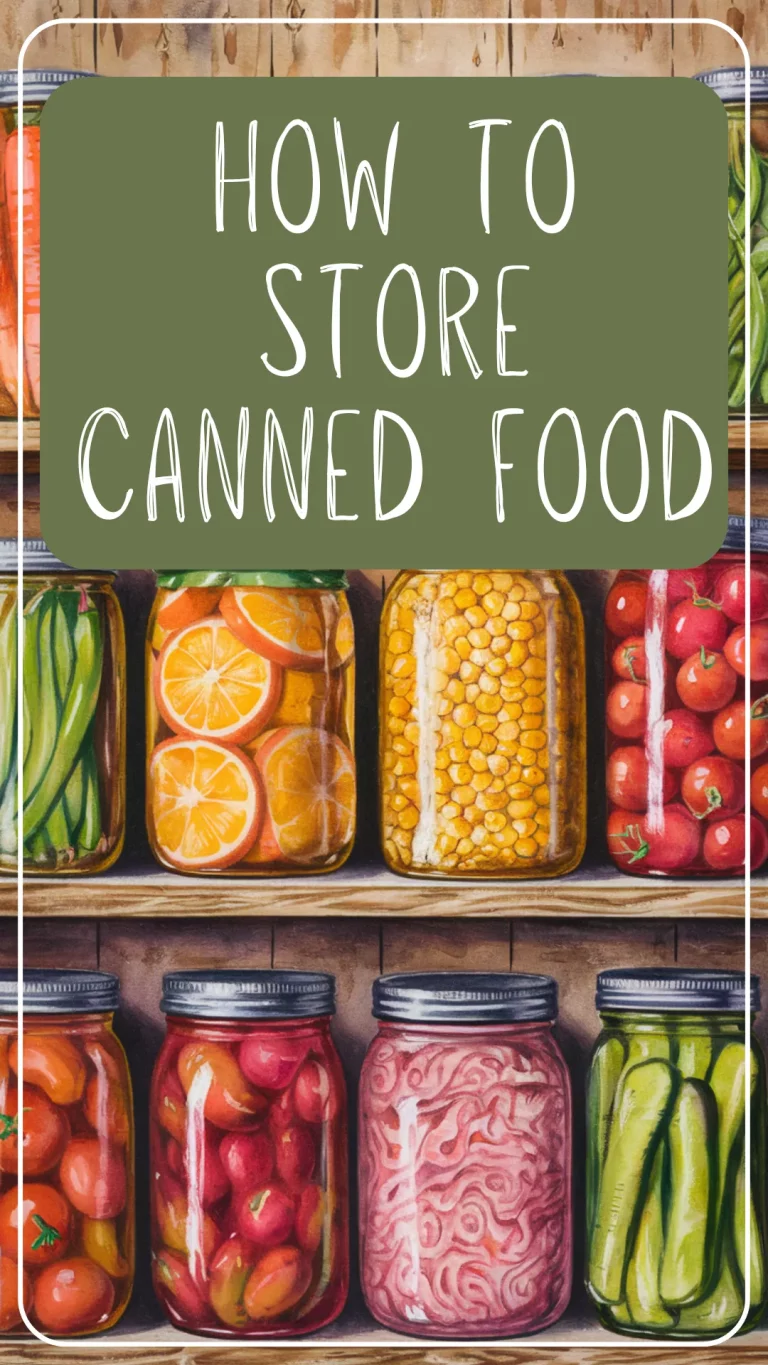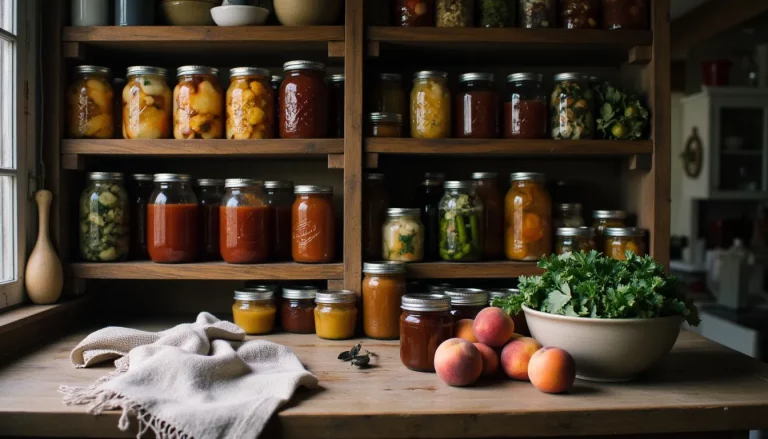Can I Can That? A Beginner’s Guide to What Can’t Be Canned at Home
Wondering if you can can milk, butter, rice, or soup? This beginner’s guide covers which foods are unsafe for home canning—and offers smart, safe alternatives like freezing and dehydrating.
Inside this post:
Which Food are Safe to Can?
If you’ve ever stood in your kitchen holding a jar of homemade soup and thought, “Can I can this?”—you’re not alone. It’s a smart question. In fact, it’s one of the most important ones a beginner canner can ask.
The truth is, while canning is an amazing way to preserve food, not everything can be safely canned at home—even if it seals, even if someone on TikTok swears it’s fine, and even if Grandma used to do it that way. Some foods just aren’t safe to can, and understanding why is a huge part of becoming a confident, informed home preserver.
This guide will walk you through exactly which foods should never go into a canning jar, explain why they’re risky, and offer safe, beginner-friendly alternatives that will still let you enjoy those foods—just in a different way.
Let’s dive into the “nope” list.
Foods You Should Never Can at Home
Here’s a list of ingredients and recipes that are not safe for home canning, even with a pressure canner. Each of these has been flagged by the USDA or the National Center for Home Food Preservation as unsafe for long-term shelf storage.
Milk, Cream, and Other Dairy Products
Fatty dairy doesn’t heat evenly and can protect dangerous bacteria during processing. There are no approved home canning methods for dairy.
Butter or Ghee
You may have seen people pressure can butter or ghee online, but there are no tested recipes proving it’s safe. Botulism risk is high, especially with clarified fats.
Eggs (Raw or Cooked)
Canning eggs—whole, scrambled, or pickled at home—has not been proven safe. Even commercially pickled eggs are done under strict, regulated conditions.
Flour-Thickened Foods
No gravies, no roux, no thick stews. Flour and cornstarch make food too dense for safe heat penetration.Tip: You can can a thinner soup and thicken it when reheating.
Pasta or Rice
Both continue to absorb liquid and expand in the jar, which creates sealing issues and unsafe densities.
Instead, can the soup base and add pasta or rice when reheating.
Pureed Vegetables (Like Pumpkin or Squash)
Thick vegetable purees are on the no-can list because they heat unevenly. The safe option? Cube it!
You can pressure can cubed pumpkin or winter squash—just not pureed.
Cream-Based Soups or Chowders
These often contain dairy, flour, and low-acid ingredients. There are no tested canning recipes for cream soups at home.
Freeze them instead!
Breads, Cakes, or Pies in a Jar
Popular in gift baskets and on Pinterest—but also one of the most dangerous trends. Sealing baked goods in a jar creates the perfect environment for botulism.
Why These Foods Can’t Be Safely Canned
It’s easy to assume that if something fits in a jar and seals, it must be safe. But canning is more than sealing a lid—it’s a science that relies on very specific temperatures, acidity levels, and time-tested methods to ensure that dangerous bacteria are destroyed and food stays shelf-stable.
Here’s why the foods in Section 1 are on the “no-go” list:
Botulism is odorless, tasteless, and deadly
Low-acid, moist, airless environments are the ideal breeding ground for Clostridium botulinum, the bacteria that causes botulism. If the right temperature isn’t reached in the very center of the jar—and held there long enough—it can survive and grow, even if the jar seals perfectly.
Fat, starch, and dairy mess with heat flow
Butter, flour, cream, and thick purees interfere with heat penetration during canning. That means the food in the center of the jar may never get hot enough to kill bacteria—even with a pressure canner.
Thick or dense foods don’t circulate heat properly
When food is too thick (like pumpkin puree or cheesy potato soup), the heat doesn’t reach the middle evenly. The outer edges may boil, but the center might stay dangerously underprocessed.
You can’t “just add more time”
Canning isn’t like baking—you can’t simply increase the time and hope for the best. The only safe way to can food is by following tested recipes that have been lab-verified to reach safe internal temps and acid levels.
Good canning is safe canning—and that means sticking to the science. It’s not about being scared, it’s about being smart.
What to Do Instead (Safe Alternatives)
Just because you can’t safely can something doesn’t mean you have to miss out! There are plenty of other ways to preserve dairy, eggs, grains, and other tricky ingredients. These alternatives are safe, beginner-friendly, and often more convenient for small-batch cooking or gifting.
Freeze It
- Soups, chowders, butter, rice dishes, sauces, and eggs freeze beautifully.
- Use freezer-safe jars or containers (leave headspace for expansion!)
- Great for creamy or thickened meals that don’t hold up to canning
Pro Tip: Label everything with contents and date—freezer mystery meals are real!
Dehydrate It
- Dehydrating is perfect for eggs, mashed potatoes, tomato paste, or fruit leather
- Store in airtight containers with oxygen absorbers
- Great for backpacking, camping, or long-term shelf storage (especially when paired with vacuum sealing)
Home dehydrators are an awesome investment if you’re preserving a garden harvest, too.
Refrigerate for Short-Term Storage
- If you’re gifting food (like soup or butter), store it in a jar—but tell the recipient to keep it refrigerated and use it within a few days
- Works well for gatherings, bake sales, or seasonal treats
Add a cute “keep me cold” tag if giving as a gift.
Can the Base, Add the Rest Later
- Want creamy chicken soup? Can the broth, chicken, and veggies—then add milk and noodles when reheating.
- Canning a stew base and finishing it fresh keeps your pantry full and your food safe.
Looking for tested canning methods? Check out:
- Pressure Canning for Beginners: A Safe & Simple Step-by-Step Guide
- Water Bath Canning for Beginners: A Simple Step-by-Step Guide
- Oven Canning – Why This Is One Trend You Should AVOID!
Final Thoughts: When In Doubt, Don’t Can It
Canning at home is an amazing way to preserve food, save money, and build a pantry you can be proud of. But one of the smartest things you can do as a beginner is know your limits—and follow the science.
If a food isn’t on the approved list for canning, it’s not because someone’s trying to spoil your fun. It’s because we now understand more about bacteria, heat flow, and food safety than ever before. And the truth is, you have plenty of safe, delicious alternatives for preserving those “uncannable” favorites.
So if you ever catch yourself asking, “Can I can that?”—you’re already on the right track. Keep asking, keep learning, and stick with tested methods. Your jars (and your family) will thank you. 🫙💛
Want to start canning with confidence?
Check out these beginner-friendly guides:






